When you buy network devices and accessories, you may notice that many suppliers will mark whether the devices support PoE. With the booming of IP cameras and phones, PoE technology has been more and more necessary. If your end devices are located outdoors or on the ceiling, it can be inconvenient to manage the electrical system. And at this time, PoE can effectively solve the problem. In this article, we’ll lift the veil of PoE, letting you have a better understanding of it.
What is Power over Ethernet?
Power over Ethernet (PoE) is an advanced technique often used in Local Area Networks (LAN). PoE technology allows Ethernet cables to transmit data and electrical power at the same time. Because a single twisted-pair Ethernet cable can provide data connection and pass electrical power simultaneously, it doesn’t require an extra electrical power cord. You only need a single, twisted pair network cable and an RJ45 plug to achieve the function of data and power transmission.
PoE is used in both home and business applications. It is usually used with VoIP phones, wireless access points (WAPs), and IP cameras. PoE technology helps reduce cabling costs and makes AP installations easier. By the way, PoE can also be named as Power over LAN or Active Ethernet.
How Does PoE Work?
There are three important parts in the PoE system: Power Sourcing Equipment (PSE), Powered Device (PD), and Ethernet cable. Power soucing equipment delivers power to the powered device through copper wires or optic fiber and it can provide the function of detection, analysis, and automatic management. The typical PSE is a PoE switch. A powered device means a device powered by PoE and the common ones are wireless access points, IP cameras, PDAs, and VoIP phones.
The electrical flow should pass the Ethernet data connection from the power source device equipment to powered devices so that PoE can work. And with Ethernet, the electrical current and data signal can work together without interfering with each other.

PoE Standards
PoE was developed many years ago. Before the IEEE standard of PoE, there were also other standards for proprietary PoE. Until 2003, The Institute of Electrical and Electronics Engineers(IEEE) standardized Power over Ethernet (PoE).
PoE (2-Pair PoE)
This is a type of PoE based on the IEEE 802.3af-2003 standard. PoE was initially used for low-power devices and each port can provide up to 15.4W of DC power. But as some power may lose when passing through the Ethernet, the IEEE 802.3af-2003 standard offers up to 12.95W to powered devices. PoE can support several powered devices such as wireless access points and VoIP telephones.
PoE+ (PoE Plus)
This type-2 PoE, also known as PoE+ or PoE Plus, is based on the IEEE 802.3at-2009 standard. The 2009 standard provides up to 30W of DC power and up to 25.5W of power to each device. So, it can support higher-powered devices such as surveillance cameras and WAPs. By the way, PoE+ is backward compatible, so it is also suitable for devices that are supported by Type-1 PoE.
PoE++ (4P PoE)
Type 3 PoE can also be called PoE++, 4P PoE, or 4-pair PoE. The IEEE 802.3bt was released in 2018 and further upgraded the power capability. Type 1 and 2 PoE only uses two pairs of copper wires to deliver power; while IEEE 802.3bt uses four pairs of copper wires to pass power to PD. It can provide up to 60W of DC power on each port and 51W of power to each device. This type of PoE can support building automation systems.
Higher-Power PoE
Type-4 PoE is also based on the IEEE 802.3bt standard. It is designed for high-powered devices and currently it offers the highest power capability. High-Power PoE can support up to 100W of power on each port and up to 71W of power for each device. Because of its high power capability, Type-4 PoE can support TV, laptops, and large screens.
|
PoE Standard |
Year |
Name |
Power Output |
Maximum Power for Each Device |
|
IEEE 802.3af |
2003 |
PoE |
15.4W |
12.95W |
|
IEEE 802.3at |
2009 |
PoE+, PoE Plus |
30W |
25.5W |
|
IEEE 802.3bt Type 3 |
2018 |
PoE++, 4P PoE, 4-pair PoE |
60W |
51W |
|
IEEE 802.3bt Type 4 |
2018 |
High-Power PoE |
100W |
71W |
Pros and Cons of PoE
Advantages of PoE
- Easy installation: With PoE, you never need to install electrical power cabling and Ethernet cables can be easier to install even if you are a novice. The installation of a network connection is simple and effective.
- Cost-effectiveness: It reduces the cost of installing electrical cables and you don’t need to find a professional electrician to install them.
- Flexibility: PoE allows the powered devices to be located anywhere and moved to any position. In addition, new equipment can be directly added to the network.
- Security: PoE is used in low-voltage applications, so it can seldom cause electrical risks. Devices using PoE can also protect network devices from overload.
Disadvantages of PoE
PoE has many advantages, but it also has some drawbacks. For example, a single PoE switch can connect to multiple power devices, but once it has a mistake in the power stream, all devices cannot work. The power transmission of PoE is generally restricted to 100 meters (328 feet) without the use of extender and PoE also has a power limit. But in general, PoE can be a great choice for home and commercial network applications.
Devices Powered by PoE
- VoIP Phone
- IP camera and other surveillance cameras
- Wireless Access Points
- Network Routers
- Automation System
- Industrial Control System
- ...

Final Thoughts
Now that you know what is PoE and what it is used for. You just need to remember one point that PoE is used to make Ethernet cables transmit data and power at the same time, which can be very convenient for your daily life.
For more information on this topic, you can keep up on our blogs. While VCELINK offers general and basic information for our customers and other visitors to the website, it’s not professional advice.
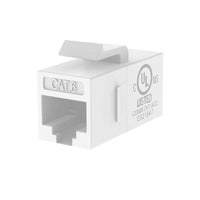
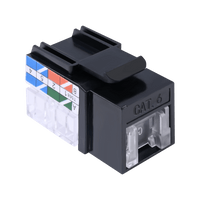
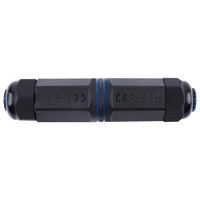
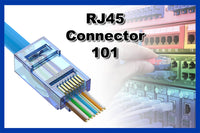

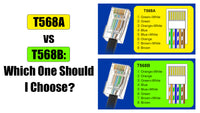
Be the first one to comment.
Leave a comment